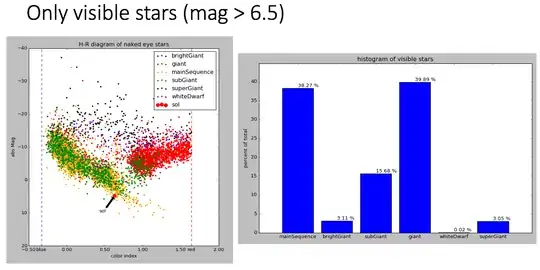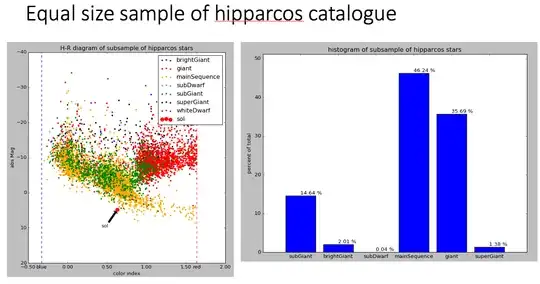Of the stars that can be seen with the naked eye, what are the distributions of each type? For example, how many are main sequence? how many are Super Red giants/white dwarfs/neutron stars...etc. What's the distribution by mass and distance?
3 Answers
Most of the brightest stars are nearby main sequence stars with spectral types B, A and F (50%, e.g. Sirius, Altair, Vega), but there are also a bunch of more distant O-type main sequence and giant stars (5%, e.g. Regor, Naos) and another big clump of red giants (about 35%, e.g. Arcturus, Aldebaran) and a few percent are distant supergiants (e.g. Deneb, Rigel, Betelgeuse). There are no white dwarfs, and definitely no neutron stars!
I have attached an image which I created by selecting 4992 bright (V<6, hence visible from a good site) stars from the new, revised, Hipparcos catalogue (van Leeuwen 2007) with a parallax and plotted them on the absolute V magnitude vs B-V colour-magnitude diagram (analogous to the Hertzsprung-Russell diagram). Also shown is a zero age main sequence for stars $<7M_{\odot}$ from Siess et al. (2001).
I also show a histogram of their log10(distance) in parsecs. It's basically lognormal with a peak at about 150pc (about 500 light years). I'm afraid mass is not so straightforward - the Hipparcos catalogue can be found at http://cdsarc.u-strasbg.fr/viz-bin/Cat?I/311 if you fancy doing it yourself
Actually as a postscript, one thing we can say about the mass distribution is that if you look at the HR diagram you see that almost all the stars either (a) have evolved to become giants and therefore must have masses $>0.9M_{\odot}$ to have done so during the time the Galaxy has existed or (b) are main sequence stars more luminous than the Sun ($M_{V,\odot} = 4.75$) and so must be more massive. So notably, all but a handful of stars visible to the naked eye are more massive than the Sun.
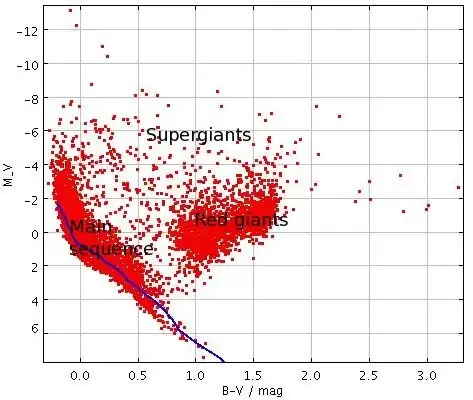
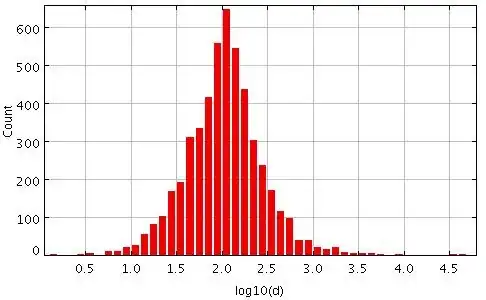
- 141,325
Here's a parsing of the hipparcos star catalogue showing the demographics of stars with magnitude > 6.5
For comparison, here's the sample presentation of an equal size random sample of the entire catalogue
apparently, the stars you can see have a bias towards giants. and none of what you see are white dwarves (I suspect that the one that shows up is anomalous as it's in the wrong part of the H_R diagram)
mass is challenging but here's a comparison of the distances of visibles versus the full catalogue
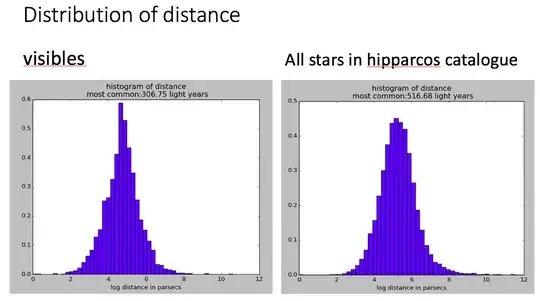
- 261
I can have a stab at estimating the Neutron star population, and perhaps suggest how to do the others.
Now as far as I'm aware there aren't any Neutron stars you can actually see with the naked eye as there cold dead stars and we mostly observe them as pulsars in the radio band. But anyway, this article estimates we can observe objects up to "a little over 4000 light years away, " so lets use that.
Now the way to do this is to find a database, for pulsars there is the excellent ATNF Pulsar Catalouge. The joy of this site it it allows you to enter a condition.
So we ask it for names of pulsars with the condition dist < 1.266. Here we had to convert light years to kpc as that is the unit used by ATNF. The output gives us 146 objects.
You can repeat this exercise if you can find similar online catalouges for the other objects your interested in, I'm afraid I only know about Pulsars.
- 159
